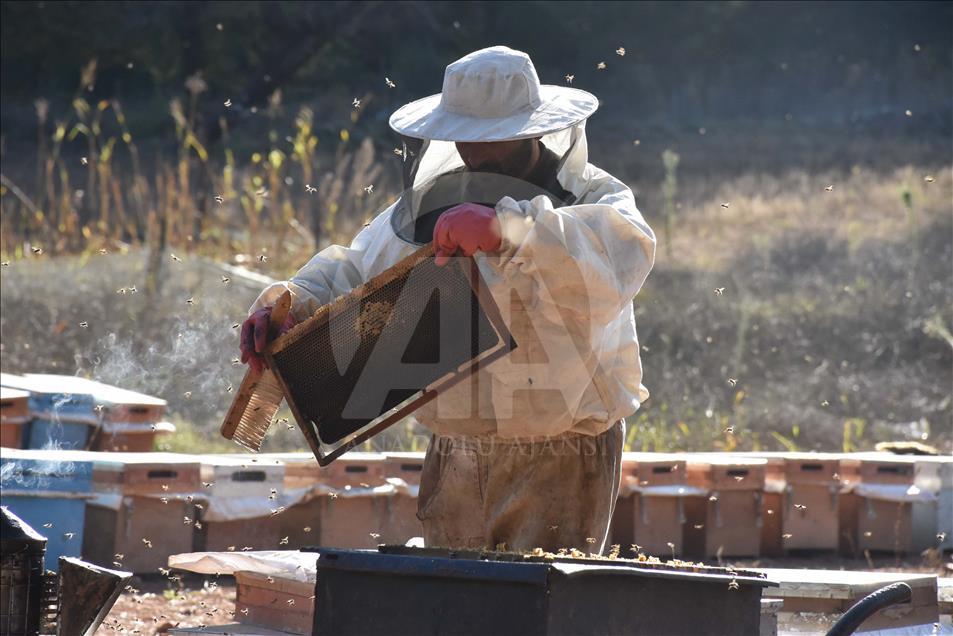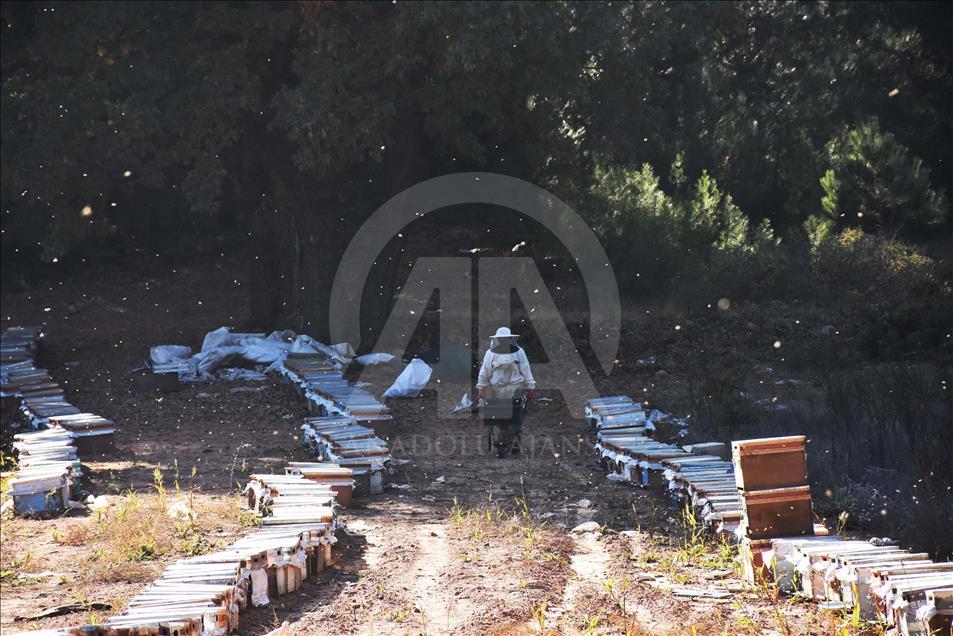Marmaris pine honey is a honey variety produced in the Marmaris district of Muğla province, Turkey. It is obtained by bees collecting and processing the sweet secretion (honeydew) of the insect Marchalina hellenica, which lives on Pinus brutia (Turkish red pine) and Pinus sylvestris (Scots pine) trees. Produced by Apis mellifera bees, this honey is protected as a designation of origin under Industrial Property Law No. 6769. Its registration number is 469; the application date was January 13, 2017, and the registration date was November 6, 2019. The registering authority is the Marmaris Chamber of Commerce, and the geographical boundary is limited to Marmaris district in Muğla province. The product is marketed with the “Marmaris Pine Honey” label and the designation of origin emblem.

Marmaris Pine Honey (AA)
History and Origin
Pine honey production in Marmaris dates back to the Ottoman period. The Temettuât Defterleri (1840–1845) record that beekeeping was widespread and that most of the local population owned hives. These documents serve as official evidence that pine honey has been produced in Marmaris for centuries. The Marchalina hellenica insect has adapted to the region’s climate and vegetation, making it a key component in honey production.
Geographical and Climatic Features
The Mediterranean climate of Marmaris shapes the distinctive characteristics of the honey. Summers are hot and dry, winters mild and rainy, with annual precipitation exceeding 1,200 mm. The dry period from May to September and rare winter frost events create a suitable environment for the insect. Of Marmaris’s 87,100 hectares, 82,557 hectares are forested, supporting the insect population. The insect population begins increasing in the second half of July and peaks by mid-August.
Physical and Chemical Properties
Marmaris pine honey is darker and thicker than other pine honeys. Key parameters include:
- Maximum moisture: 18%
- Electrical conductivity: ≥ 1.09 mS/cm
- Hydroxymethylfurfural (HMF): ≤ 40 mg/kg
- Free acidity: ≤ 46.89 meq/kg
- Proline: ≥ 500 mg/kg
- Diastase number: ≥ 9
- Sucrose: ≤ 10 g/100 g
- Glucose: 25.90 ± 2.40%
- Fructose: 28.93 ± 3.21%
- Glucose + fructose: ≥ 45 g/100 g
- Fructose/glucose ratio: 1.0–1.4
- Naphthalene: ≤ 10 ppb
Compared to floral honeys, it has lower glucose and fructose levels, making it less sweet and not irritating to the throat. It is rich in enzymes, amino acids, and minerals.
Organoleptic Properties:
- Color: Dark brown to reddish
- Hunter color scale: L = 35.06–72.36 (avg. 57.32), a = 13.12–28.23 (avg. 21.13), b = 58.96–86.88 (avg. 78.58)
- Taste: Resinous and pine-flavored
- Aroma: Characteristic of pine trees, dominant compounds are nonanal (34%) and nonanol (19%), with minor components including octanal, 1-octanol, and decanal
- Texture: Thick and slow-flowing, resistant to crystallization
- Pollen predominantly from Ericaceae family

Marmaris Pine Honey (AA)
Production Method
Production is carried out via stationary and migratory beekeeping. During winter (November–January), bees are housed in Marmaris; autumn feeding is done with dark syrup (2:1 sugar-water) for 15 days, followed by pollen substitutes for solid feeding. Wintering sites must be dry, quiet, dark, and slightly inclined (~4%), with hives raised 1 meter above ground. In spring (February–May), bees forage on local flowers before migrating to surrounding provinces. From mid-July, honey is produced from pine honeydew until the end of October, with three harvests per season.
Harvesting is performed in the late afternoon when at least 2/3 of the comb is capped. Combs are filtered and rested in chrome tanks. Varroa mite control is carried out in March-April and October with licensed products, alternating techniques every two years. Honey is produced in three forms: filtered (centrifuged), comb (≥80% capped), and wild-hive (uncapped, natural). Packaging, storage, and transport comply with the Turkish Food Codex; honey is kept in light-protected containers.
Inspection and Protection
Inspections are coordinated by the Marmaris Chamber of Commerce with a minimum three-person committee including representatives from the District Agriculture and Forestry Directorate, Municipality, and Health Directorate. Producers must register with the chamber; apiaries are checked for hive numbers, location, and flora. Pre-harvest notification is mandatory; additional inspections and sampling are conducted for the second and third harvests. Laboratory analyses are performed at designated labs, with costs borne by the producer. Inspection reports are submitted annually to the Turkish Patent and Trademark Office. Extra inspections can occur in case of complaints or suspicion.


